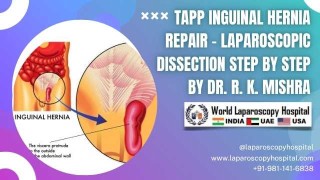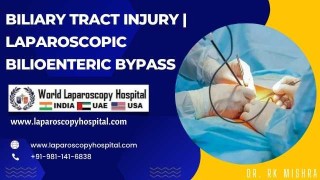Laparoscopic Sterilization Lecture by Dr R K Mishra
Add to
Share
286 views
Report
2 months ago
Description
Laparoscopic sterilization is one of the most widely practiced methods of permanent contraception for women worldwide. Known for its safety, minimal invasiveness, and quick recovery, it has become the preferred choice for both patients and surgeons. At World Laparoscopy Hospital, Dr. R. K. Mishra, a pioneer in minimal access surgery and an acclaimed educator, delivers highly insightful lectures on laparoscopic sterilization, offering both theoretical depth and practical surgical knowledge. Importance of Laparoscopic Sterilization Female sterilization through laparoscopy provides a permanent solution for family planning by occluding or removing the fallopian tubes. It is highly effective, with success rates exceeding 99%. Unlike traditional open methods, laparoscopy ensures: Smaller incisions Minimal postoperative discomfort Reduced risk of complications Faster return to normal activities Highlights of Dr. R. K. Mishra’s Lecture Dr. Mishra’s lecture on laparoscopic sterilization is a comprehensive blend of anatomy, surgical technique, and patient care. His teaching style is globally appreciated for being practical, detailed, and easy to understand. The key elements of his lecture include: 1. Patient Selection and Counseling Dr. Mishra emphasizes the importance of thorough preoperative counseling, explaining the permanence of sterilization, alternative methods of contraception, and obtaining informed consent. Patient selection is also discussed, particularly the contraindications such as pelvic infection, cardiopulmonary risks, or undiagnosed pelvic pain. 2. Surgical Techniques The lecture provides a step-by-step explanation of various laparoscopic sterilization methods: Bipolar cauterization Falope ring application Filshie clips Partial or total salpingectomy Each method is analyzed for its advantages, limitations, and long-term outcomes. 3. Instrumentation and Setup Dr. Mishra introduces the instruments required, such as laparoscopes, trocars, electrosurgical units, and sterilization applicators. He highlights the importance of ergonomic setup in the operating room for reducing surgeon fatigue and improving efficiency. 4. Managing Complications No surgical procedure is without risk. Dr. Mishra sheds light on how to recognize, prevent, and manage potential complications such as bleeding, injury to surrounding organs, and post-tubal sterilization syndrome. 5. Postoperative Care and Follow-Up The lecture covers recovery protocols, pain management, and the importance of follow-up visits. Dr. Mishra stresses counseling on the rare chances of sterilization failure and the increased risk of ectopic pregnancy if pregnancy occurs. Educational Value for Surgeons For surgeons and gynecologists, Dr. Mishra’s lecture goes beyond technical skill—it instills the principles of patient-centered care, ethical responsibility, and surgical precision. His teaching integrates live demonstrations, 3D animations, and clinical case discussions, making it an invaluable learning experience for postgraduate trainees and practicing surgeons alike. Conclusion The Laparoscopic Sterilization Lecture by Dr. R. K. Mishra not only enriches medical professionals with surgical expertise but also ensures they develop a holistic approach toward patient safety, counseling, and long-term reproductive health. With his global teaching legacy, Dr. Mishra continues to shape the future of gynecological surgery and inspire surgeons across the world.
Similar Videos






